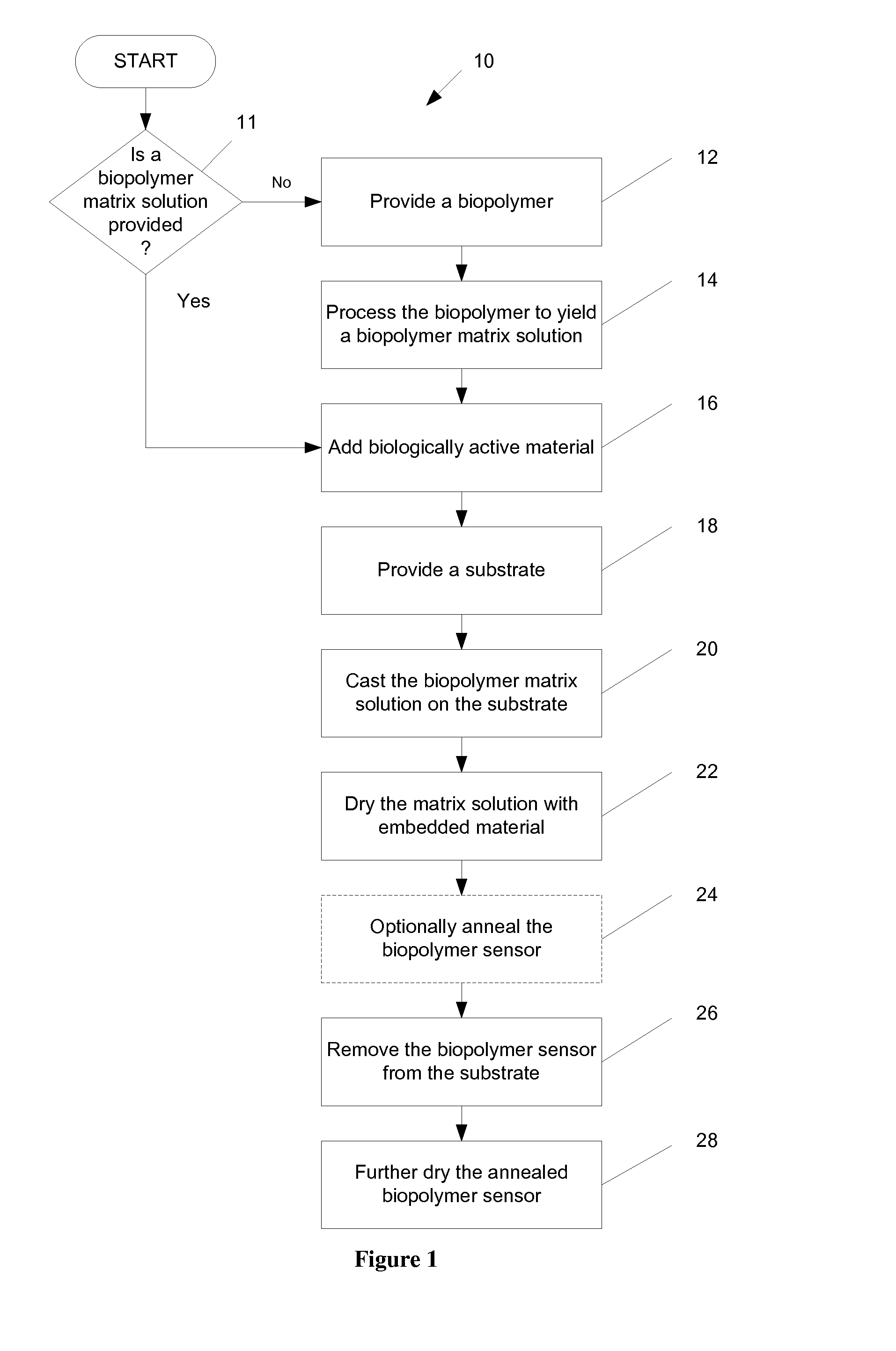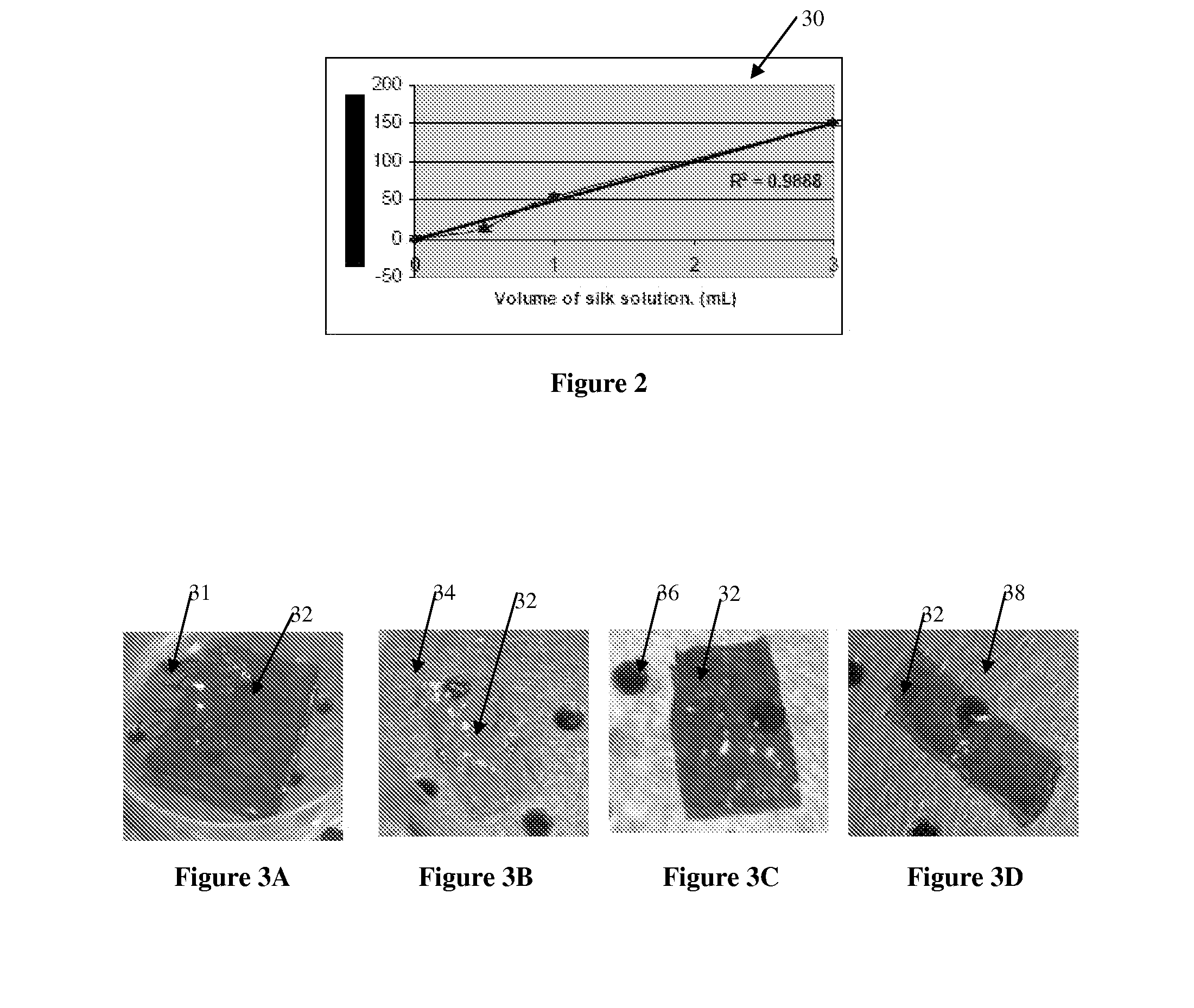Biopolymer sensor and method of manufacturing the same
a biopolymer and sensor technology, applied in the field of biopolymer sensors, can solve the problems of not biodegradable metals and metallic compounds, long time in the environment, and inability to recycle, etc., and achieve the effects of novel structure and resulting functions, impressive mechanical properties, and minimal environmental impa
- Summary
- Abstract
- Description
- Claims
- Application Information
AI Technical Summary
Benefits of technology
Problems solved by technology
Method used
Image
Examples
Embodiment Construction
[0051]Initially, it is noted that in view of the superior functional characteristics and processability that were noted above, biopolymer sensors of the present invention are described herein below as being implemented with silk, which is biocompatible and biodegradable. In this regard, the silk utilized was silkworm silk. However, there are many different silks, including spider silk, transgenic silks, and genetically engineered silks, variants thereof and others, that may alternatively be used in accordance with the present invention to manufacture a biopolymer sensor. In addition, other biocompatible biodegradable polymers may be used instead of silk. For example, some biopolymers, such as chitosan, exhibit desirable mechanical properties, can be processed in water, and form generally clear films for optical applications. Other biopolymers, such as collagen, gelatin, agarose, chitin, polyhydroxyalkanoates, pullan, starch (amylose amylopectin), cellulose, hyaluronic acid, and rela...
PUM
| Property | Measurement | Unit |
|---|---|---|
| Dimensionless property | aaaaa | aaaaa |
| Dimensionless property | aaaaa | aaaaa |
| Dimensionless property | aaaaa | aaaaa |
Abstract
Description
Claims
Application Information
 Login to View More
Login to View More - R&D
- Intellectual Property
- Life Sciences
- Materials
- Tech Scout
- Unparalleled Data Quality
- Higher Quality Content
- 60% Fewer Hallucinations
Browse by: Latest US Patents, China's latest patents, Technical Efficacy Thesaurus, Application Domain, Technology Topic, Popular Technical Reports.
© 2025 PatSnap. All rights reserved.Legal|Privacy policy|Modern Slavery Act Transparency Statement|Sitemap|About US| Contact US: help@patsnap.com



